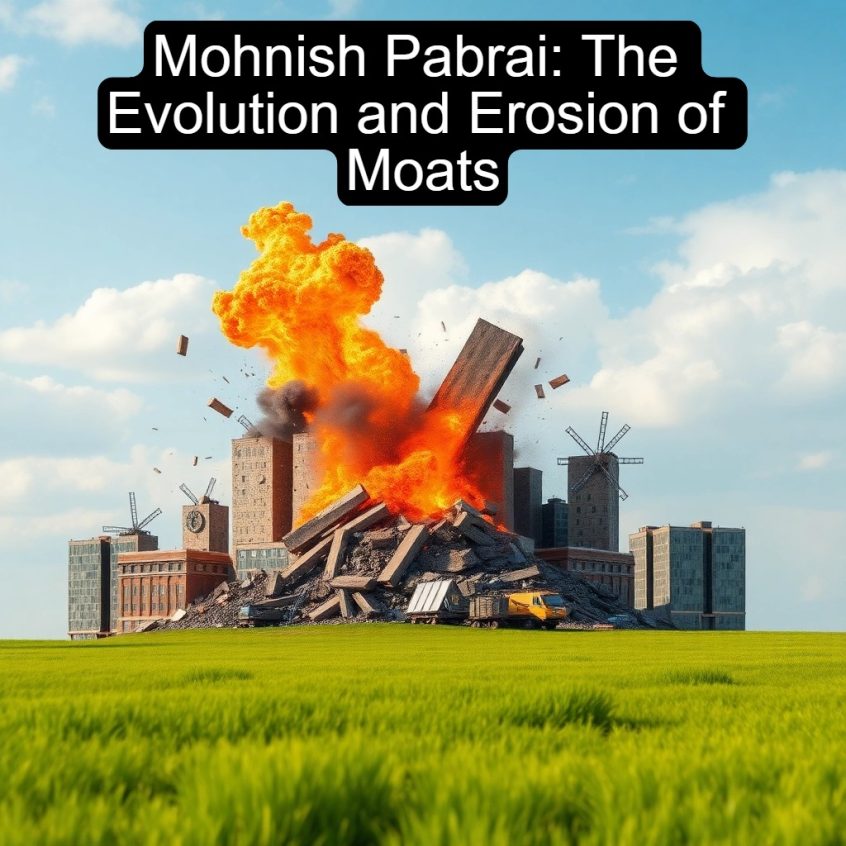In his book The Dhandho Investor, Mohnish Pabrai explains how a business’s hidden moat, or competitive advantage, can often be identified through its financial statements. Businesses with strong moats generate high returns on invested capital, as seen in examples like Chipotle, which reinvests profits to fuel exponential growth.
Pabrai draws parallels between business moats and historical castles, emphasizing that even the strongest defenses are eventually breached due to relentless competition. He highlights examples like Delta and General Motors, whose once-formidable moats eroded over time.
Quoting Charlie Munger, Pabrai underscores the inevitability of competitive destruction, making long-term business survival rare and challenging for most companies.
Here’s an excerpt from the book:
How do we know when a business has a hidden moat and what that moat is? The answer is usually visible from looking at its financial statements. Good businesses with good moats, like our barber, generate high returns on invested capital.
The balance sheet tells us the amount of capital deployed in the business. The income and cash flow statements tell us how much they are earning off that capital.
So, if a Chipotle store costs $700,000 to open and it generates $250,000 a year in free cash flow, it’s a damn good business. Every three years it can take that cash flow and open another Chipotle. When it starts franchising, the return on invested capital is exponentially higher.
Throughout history, kings have sought to build heavily fortified castles with ever-widening and deeper moats. At the same time, the marauding invaders continued to attack unabated and have endlessly improved the tools, techniques, and armies at their disposal to capture these prize castles.
It is virtually a law of nature that no matter how well fortified and defended a castle is, no matter how wide or deep its moat is, no matter how many sharks or piranha are in that moat, eventually it is going to fall to the marauding invaders. Throughout history, every great civilization and kingdom has eventually declined.
The businesses mentioned earlier as having narrow or nonexistent moats—Delta, Gateway, General Motors—all had pretty formidable moats at one time. They have all eroded over time, just like the most well-defended castle eventually falls into the enemy’s hand.
Here is Charlie Munger’s take on it:
“Of the fifty most important stocks on the NYSE in 1911, today only one, General Electric, remains in business… That’s how powerful the forces of competitive destruction are. Over the very long term, history shows that the chances of any business surviving in a manner agreeable to a company’s owners are slim at best.”
— Charlie Munger
You can find a copy of the book here:
For all the latest news and podcasts, join our free newsletter here.
Don’t forget to check out our FREE Large Cap 1000 – Stock Screener, here at The Acquirer’s Multiple:



